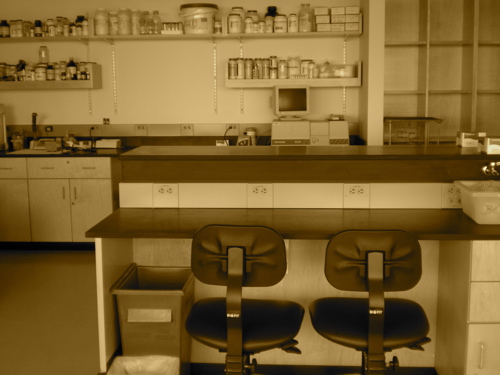Difference between revisions of "20.109(S10):Prepare RNA by IVT (Day3)"
(→Introduction) |
(→Part 1: In vitro transcription) |
||
| Line 50: | Line 50: | ||
</center> | </center> | ||
| − | Place your reaction tubes on the 37 °C heat block and write the time in your notebook. When everyone is ready, we will begin the journal article discussion. <font color=red>Also have Atissa come in and give her presentation talk?</font color> | + | Place your reaction tubes on the 37 °C heat block and write the time in your notebook. When everyone is ready, we will begin the journal article discussion. <font color=red>Also have Atissa come in and give her presentation talk? |
| − | + | ||
| + | #Put your reactions in the 37 °C heat block. After 3-4 hours, they will be frozen at – 20 °C until next time. | ||
| + | |||
| + | OR | ||
| + | |||
| + | #Put your reactions in the 37 °C heat block. When everyone is ready, we will have today’s lecture and quiz. After 3 hours, add 2 (per 20) μL DNase I to each reaction. After 30 min, they will be frozen at – 20 °C until next time.</font color> | ||
| + | |||
===Part 2: Journal article discussion=== | ===Part 2: Journal article discussion=== | ||
Revision as of 19:59, 5 January 2010
Contents
Introduction
So far you have prepared the DNA encoding both the 6-5 and the 8-12 aptamer fragments. However, it is the secondary structure of the RNA that actually allows the 8-12 sequence to bind to heme. In order to make RNA from DNA, you will perform an in vitro transcription (IVT) reaction.
What is needed to create RNA from DNA? In PCR, you used a DNA polymerase and dNTPs to make your DNA. In an IVT, you will use an RNA polymerase and NTPs instead. The polymerase is purified from T7… The buffer conditions are also somewhat different (check out the reagent lists at the end of each day), but both contain the important co-factor Mg2+. Finally, an IVT contains pyrophosphatase, because it has been empirically found to increase efficiency.
Because you are preparing RNA, you will have to take special precautions today and for the rest of the module. Quote old wiki RNA stability stuff…
The IVT will run during the whole lab period… In the meantime, we will...
Protocols
Part 1: In vitro transcription
The table below lists the amount of each reaction component needed for an 80 μL IVT. First, you should calculate how much total IVT Master Mix to make (2 or 4 rxns depending on whether you and your partner share one mix or not, plus 10% excess) and check your calculations with the teaching faculty if desired. Next, you can aliquot the appropriate amount of Master Mix into a number of eppendorf tubes, then add the relevant DNA to each labeled tube.
| Reagent | Amount for 1 reaction (μL) | Amount for N reactions + 10% |
|---|---|---|
| G7 buffer (2.5X stock) | 32 | |
| 1N KOH | 4.48 | |
| Pyrophosphatase | 4 | |
| NTPs | 22.4 | |
| T7 polymerase | 4 | |
| DNA | 13.1 | N/A |
Place your reaction tubes on the 37 °C heat block and write the time in your notebook. When everyone is ready, we will begin the journal article discussion. Also have Atissa come in and give her presentation talk?
- Put your reactions in the 37 °C heat block. After 3-4 hours, they will be frozen at – 20 °C until next time.
OR
- Put your reactions in the 37 °C heat block. When everyone is ready, we will have today’s lecture and quiz. After 3 hours, add 2 (per 20) μL DNase I to each reaction. After 30 min, they will be frozen at – 20 °C until next time.
